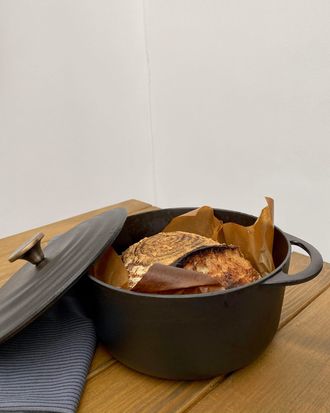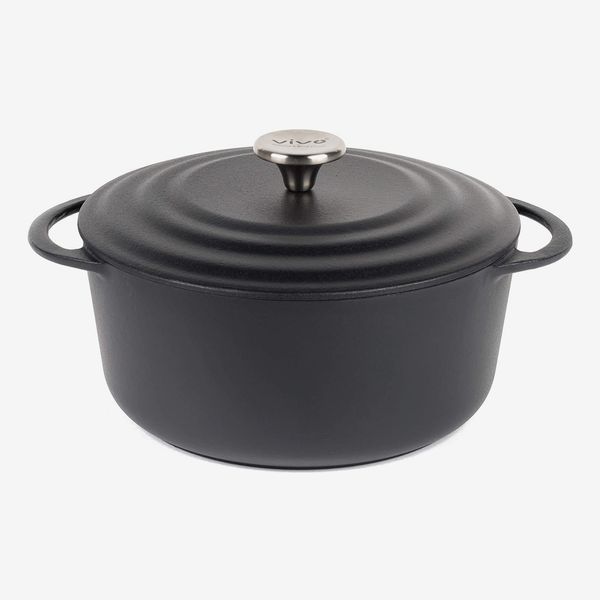
When the pandemic hit in March, many stages passed me by. I didn’t see the point in hoarding pasta and toilet paper when my local Turkish and Polish corner shops had both aplenty (plus pierogies and baklava). My glut of bananas got turned into pancakes without much fanfare. Sourdough bread, on the other hand, I couldn’t stop thinking about. Armed with rye flour and lofty aspirations, I created my starter, naming it Søren— after Kierkegaard, and the existential dread I knew the pursuit would inevitably bring.
A few edible but certainly not Instagramable attempts later, I realised that while in theory sourdough only requires flour and water, it also requires the right equipment to get it over the finish line. It was time to buy a cast-iron pot. I’ve been a keen cook since the age of 12 and I own enough kitchen equipment to get me through most recipes. But there is a reason I evaded the cast-iron casserole pot for as long as I did. In the world of cast-iron cookware, one brand is synonymous with great quality: Le Creuset, with a price to match.
Here’s how I like to shop: I’m not much of a dupe hunter — I believe that quality is something worth paying for. But sometimes, I’ll opt for a “starter” version of the thing I really want first, to see if I’ll actually use it. And so, I began the hunt for a starter cast-iron pot that I could test-drive on my road to Le Creuset ownership. I read reviews as obsessively as I watched YouTube videos on the best way to make sourdough, staying up well into the night. When I saw Vivo’s pot on Amazon, I blinked a few times at the price. At £24.99 it looked like the epitome of “too good to be true”; I returned to the page two days later to buy it. There were no colour or size options — just one matte black, 24-cm, 4.2-liter pot, which proved ideal for my acute decision fatigue.
[Editor’s note: The price has risen slightly since we first published this story, the pot is now £27.]
It arrived promptly and packaged well, weighing more than I had anticipated. Inside the package, there was a care leaflet outlining how to clean, store, and look after the pot for longevity. Following the instructions, I wiped it down with a damp cloth, drying it thoroughly afterwards, and added a thin layer of oil before attempting a sourdough loaf. I preheated the pot in the oven, added my dough, and 40 minutes later a golden loaf stared back at me.
Since then, I’ve made yet more bread in my new pot and used it for soups and stews, too; slow-cooking tough cuts of meat in the oven for hours, simmering pasta sauces on the hob. It was up to every task. The care instructions don’t mention anything about washing it in the dishwasher, so I wash it by hand without issues, and dry it well with a tea towel.
I’ve since learnt that the main difference between a pot like Le Creuset and the one by Vivo is the enamel coating — Le Creuset has one, while Vivo doesn’t. In theory, an enameled pot is easier to care for, though I’ve had no issues whatsoever, even after slow cooking and baking at very high temperatures. This could be because Vivo is actually a diffusion line of Villeroy & Boch, a ceramics company best known for its fancy tableware. As far as I can see, Vivo’s cookware range is limited: There’s a fondue set, a wok, and some stoneware baking dishes. I don’t think I’ll be branching out further (although the fondue set might appeal come winter), but needless to say, after a few weeks of use my Vivo pot had lost its status as a “starter” Le Creuset. It’s been a couple of months now, and I don’t plan on upgrading at all.
The Strategist UK is designed to surface the most useful, expert recommendations for things to buy across the vast e-commerce landscape. Read about who we are and what we do here. Our editors update links when possible, but note that deals can expire and all prices are subject to change.
